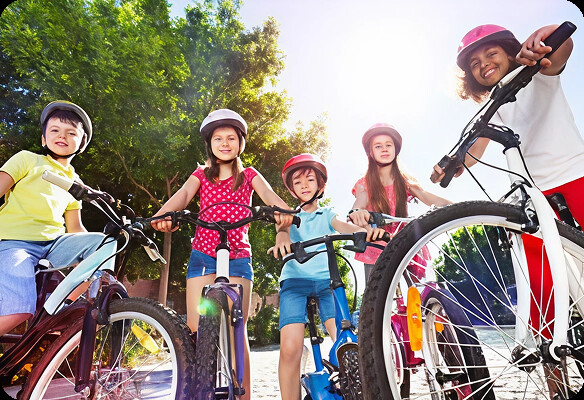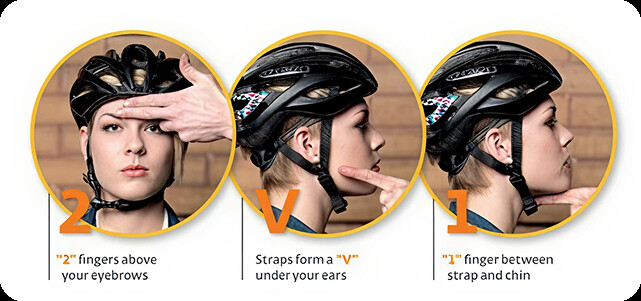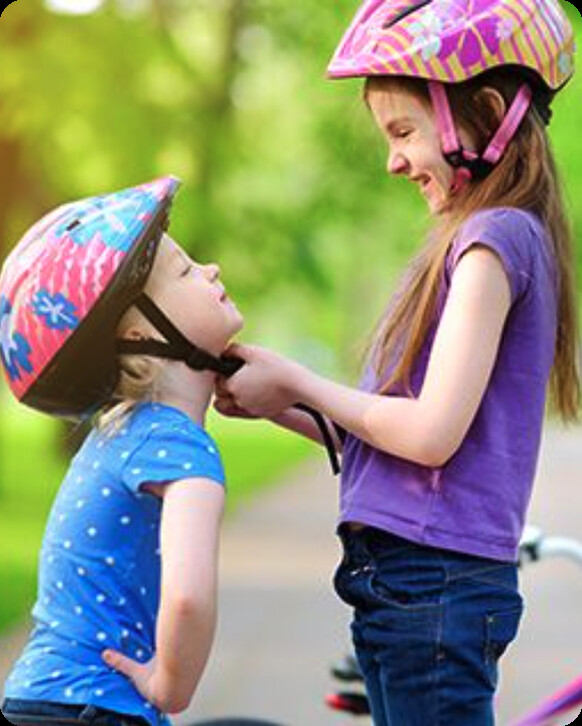

Bike helmets save lives. Crashes and falls happen and when they do, a properly fitted helmet can protect you from a serious or even deadly head injury. That means parents too!


Cyclists who ride without helmets are 8 times more likely to have brain injuries when in a crash, compared to cyclists who wear helmets.

For more information download the 2VI Helmet Fitting Guide



For more information download the Ontario Guide to Safe Cycling.

The A-B-C Quick Check: Do it before you ride.
A is for Air - Check your tire pressure before each ride. Check that your wheels are true. Check that the valves on your tires are sitting straight. Check that the sidewalls on your tires are not worn.
B is for Brakes and Bars - Check that your brake pads hit the wheel rim squarely, without touching the rubber. Check for two finger's distance between the brake lever and your handgrip when squeezed. Check your brake cables for wear and kinks. Check to see if your handlebars are loose.
C is for Chain - Check that your chain is on properly. Check that it is properly lubricated. Check for damage, and be sure your pedals spin freely backwards.
Quick is for Quick Release - Check that your quick release tires are on securely. Quick release handles should be pointed toward the rear of the bike.
Finally, perform an overall check of your bike by lifting it several inches off the ground and dropping it. Listen for loose parts, and tighten as necessary. Keep a spare tube, mini pump/CO2, and multi-tool with you when you ride.

